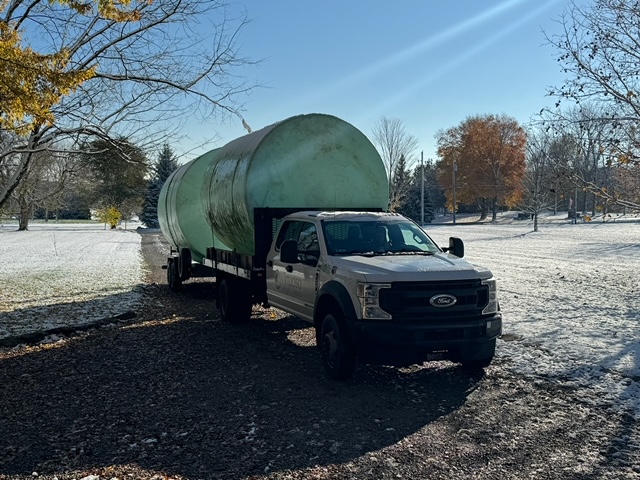
What is Brine?
Plain and simple, brine is a mixture of salt and water. But here we're not talking about water softeners or a way to make chicken taste better, we're talking about a more effective and environmentally friendly way to keep snow and ice off your surfaces longer, and a faster way to clear it once it begins to stick.
Fast Facts on Liquids
Melt snow faster
Liquids typically work 3-4x faster than rock salt alone. Rock salt can't melt ice until it converts to liquid brine, so we have to wait for the solid to react to moisture before it becomes effective. Applying liquid brine directly "cuts out the middleman."
A cleaner property, inside and out
No leftover residue or rock salt sitting on surfaces provides a cleaner-looking property and reduces the high cleaning costs from salt being tracked into buildings.
No fear when temperatures drop
Liquids blended with an additive can work at temperatures down to -30 degrees, far beyond the reach of rock salt, which generally becomes ineffective between 10-15 degrees.
Protect the environment
Liquids provide as much as 75% chloride application reduction, and “stay put” where they are applied. Salt may bounce, get moved with traffic, plowed into grass and other vegetation, or end up in storm drains
Save money on property damage
Liquids are up to 80% less corrosive than rock salt alone. A single ton of salt applied on a property can cause between $800-$3,000 in long-term infrastructure damage.
Help prevent refreeze
Pre-treating with liquids helps prevent the bond of snow and ice to pavement, which assists with machine traction and allows for a cleaner scrape during plowing, thus helping prevent refreeze as temperatures drop after a storm.